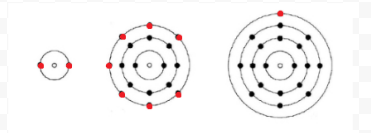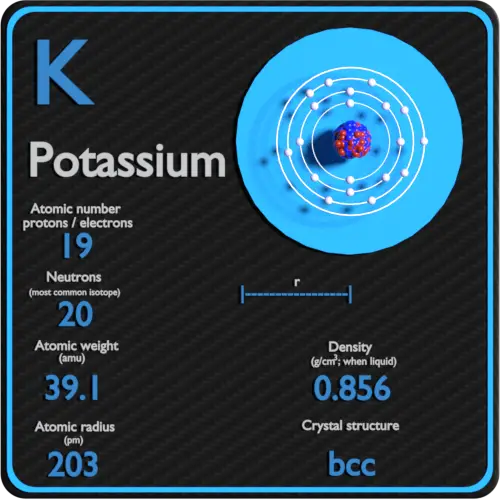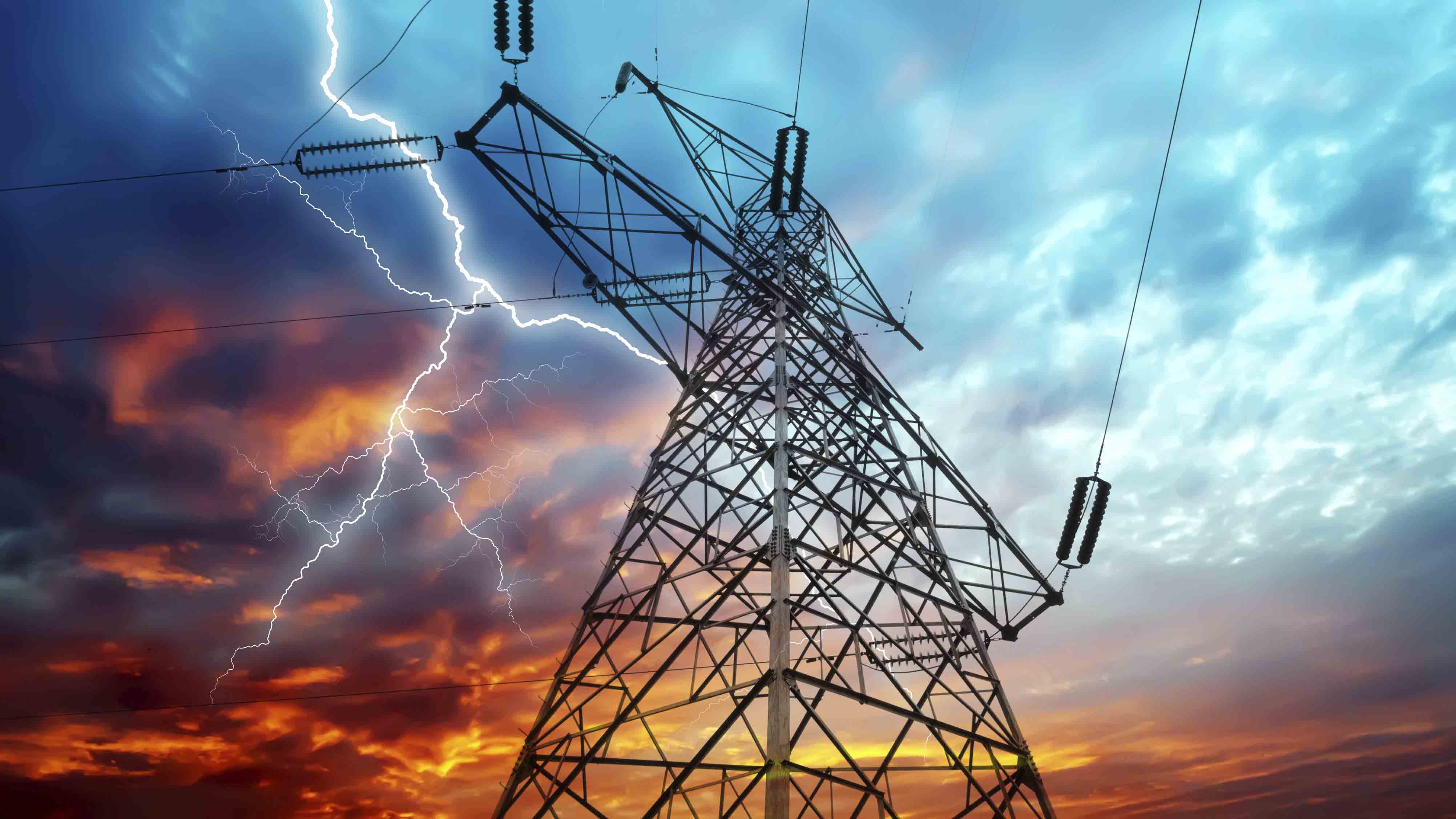
There are two ways to find the number of valence electrons in Potassium (K). The first is to use the Periodic Table to figure out how many electrons Potassiu. For example, you can have potassium-37, which has 1 Potassium has an atomic number of 19. So for an atom to be known as a potassium atom, it must have 19 protons. Click to see full answer Hereof, how many electrons are in potassium 37? Potassium has an atomic number of 19, which means one neutral atom of this element has 19 electrons. There will be two electrons in the first energy level, eight in the second level, eight in the third level and one in the final energy level. This last electron is known as a valence electron. When the two atoms are in contact, potassium readily transfers its outer electron to chlorine which readily accepts it, resulting in both atoms achieving a state of eight outermost electrons. With this electron transfer, the ionic bond in KCl is formed. Atomic Number 19. Potassium is a metal in group 1 of the periodic table. This means it has one electron in its outside shell. Potassium wants to be stable. In chemistry this means it wants to have a full shell. It can have a full shell by getting rid of the one electron. Metals give up their electrons to become stable. Bromine is in group 7 of the periodic table.
Answer 1:As you may know, atoms are composed of three different types of particles: protons, neutrons, which are found in the nucleus, and electrons which are found in the electron cloud around the nucleus. Protons and neutrons are responsible for most of the atomic mass. The atomic mass for protons and neutrons is the same. A proton has an atomic mass of 1 u (unified atomic mass). The mass of an electron is very small. Protons have a positive (+) charge, neutrons have no charge --they are neutral. Electrons have a negative charge (-). The number of protons and electrons is the same in a neutral (uncharged) atom.
How can you find out how many protons (= electrons) an element has? You look at the periodic table. In this table the elements are listed according to their atomic number. Hydrogen is the first element with an atomic number of 1. Now, the atomic number is also the number of protons in an element. It is always constant. (e.g., H=1, K=19, Ur=92). So if you look for potassium (symbol K in the periodic table), you will find that it has the atomic number of 19. This tells you that potassium has 19 protons and - since the number of protons is the same as the number of electrons- also 19 electrons.


To find out the number of neutrons you have to look at the atomic mass or weight of the element. This can also be found in the periodic table. It is the number under the element symbol. For potassium it is about 39. This means that the atomic weight is 39 for both protons and neutrons. Since we know that the number of protons is 19 we can calculate the number of neutrons (39 19) as 20.
Things can be a bit more complicated however. The same element may contain varying numbers of neutrons; elements that have the same number of protons but different numbers of neurons are called isotopes. Oxygen, with atomic number of 8, for example, can have 8, 9, or 10 neutrons. (The atomic number for oxygen is 8, and the atomic mass is 15.9994).
If you read the atomic weight for potassium it reads 39.098. This tells you that there must be some other isotopes for potassium. In fact, natural potassium has three isotopes with 20, 21 and 22 neutrons with the abundance of 93.26 %, 0.01 % and 6.73 % respectively.
More information can be found at this web site: periodic Just click on the elements.
Valence Electrons In Potassium
Click Here to return to the search form.How Many Unpaired Electrons In Potassium
